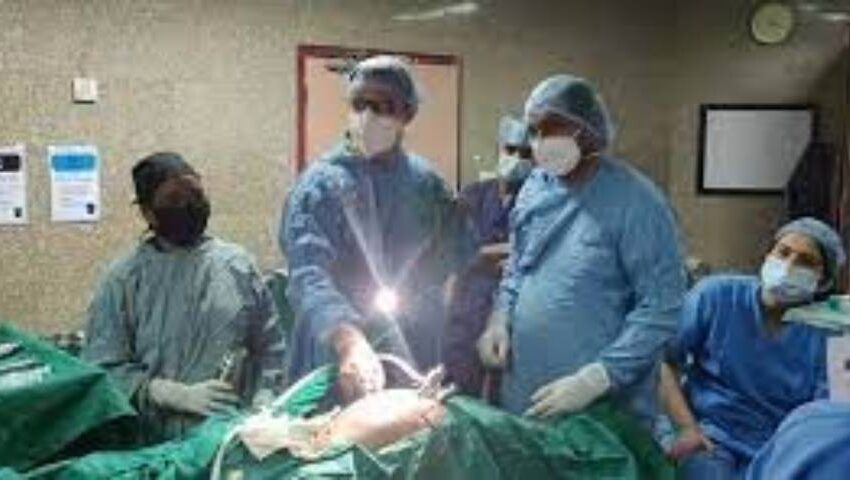
- 17/05/2021
- Dr. Samrat Jankar
- 0 Comments
- Blog
Abdominal wall reconstruction
Patients who previously had abdominal surgery many times suffer from life-altering, debilitating hernias. It is a condition wherein the internal organs bulge from the muscles that were operated on during surgery.
As a result, a painful and unsightly abdominal protrusion develops, necessitating additional surgery to correct it.
You can undergo AWR surgery under the renowned laparoscopic surgeon in Pune, an expert in treating various forms of hernias and their complications, using newer approaches that can provide patients with the best outcomes and lowest recurrence rates.
What is abdominal wall reconstruction?
The stomach, kidneys, and small intestine are protected by layers of skin, fat, and muscle that make up the abdominal cavity. The abdominal wall muscles help to stabilize the torso and support essential functions, including breathing and urination.
The abdominal wall may become weakened due to the development of complex hernias and the recurrence of a previously healed hernia.
The surgeon must restructure the tissues of the abdominal wall in these situations. Abdominal wall reconstruction is a surgical operation that aims to restore the abdominal muscles’ structural and functional integrity.
What is the purpose of abdominal wall reconstruction?
Patients who have undergone failed hernia repair procedures are the most likely candidates for abdominal wall reconstruction. Abdominal wall reconstruction aims to heal any open wounds in the abdominal wall, restructure the tissues, and strengthen the muscle integrity.
Patients having the following symptoms may benefit from abdominal wall reconstruction:
- Recurrent hernias
- Incisional hernia
- Infection that arises as a result of surgery
- Wound developing after hernia surgery
Abdominal Wall Reconstruction Procedure
The operation is carried out under general anesthesia. Depending on the complexity of the defect, the procedure will take anywhere from two to eight hours to complete.
The surgeon can gain access to the wound through a lower abdominal incision. The doctor would then separate the abdominal wall layers and transfer them into a natural position to reshape the abdominal tissues. To reinforce and protect the abdominal muscles, he can use a surgical mesh.
What are the risks of AWR surgery?
AWR surgery is an invasive operation. This operation, like any other surgery, carries certain risks, such as:
- Bleeding
- Infection
- Swelling and bruising
- Scarring
- Temporary numbness near the surgical site
- Poor healing of the wound
- Recurrence of hernia
- Vomiting and nausea
Advantages of AWR surgery
The dynamic nature of abdominal wall reconstruction helps surgeons repair complicated hernias and abdominal wall defects that would be tough with conventional hernia repair techniques.
Pre-operative preparation for AWR surgery
The surgeon will provide pre-procedure instructions to the patient prior to surgery. You may have to fast for at least eight hours prior to the procedure.
Patients who smoke should refrain from doing so for around two weeks before the operation. Smoking hinders the body’s healing process because it reduces the amount of oxygen that passes through it.
Patients who are already taking medications should consult their doctor to see whether they should continue to take their medicines as prescribed before the surgery.
Some medications can influence the body’s ability to clot blood, which can lead to complications during or after surgery.
Post-operative recovery after AWR surgery
Following abdominal wall reconstruction, patients will remain in the hospital for about 2-7 days, depending on their general health and the nature of the operation performed.
Patients will resume normal activities 4-6 weeks after the operation and regular exercise in six weeks. It is essential to follow all postoperative guidelines and to make and keep all necessary follow-up appointments.
